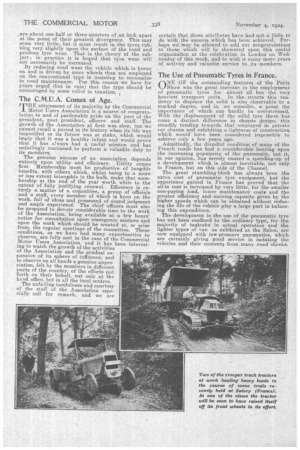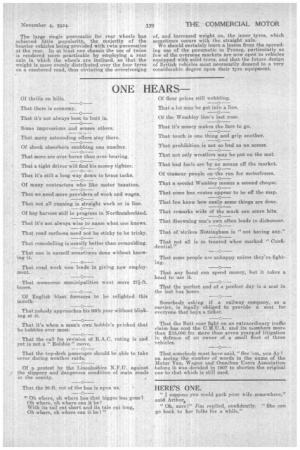The Use of Pneumatic Tyres in France.
Page 2

Page 3

If you've noticed an error in this article please click here to report it so we can fix it.
ONE OF the outstanding features of the Paris Show was the great increase in the employment of pneumatic tyres for almost all but the very heaviest transport units. In the. streets this tendency to displace the solid is also observable to a marked degree and is, we consider, a point the ,importance of which can hardly be overstressed. With the displacement• of the solid tyre there has come a distinct difference in chassis design, this steadily tending towards that employed in private car chassis and exhibiting a lightness of construction. which would have been considered impossible to achieve only a few years ago. Admittedly, the dreadful condition of many of the French roads has had a considerable bearing upon the increasing popularity of the pneumatic, but it, in our opinion' has merely caused a speeding-up of a development which is almost inevitable, not only in France, but on this side of the Channel. The great stumbling-block has always been the extra cost of pneumatic tyre equipment, but the experience gained in France has proved that the all-in cost is increased by very little, for the smaller non-paying load, lower maintenance costs and the greater efficiency and earning capacity given by the higher speeds which can be obtained without reducing the life of the vehicle play a large part in balancing this expenditure. The development in the use of the pneumatic tyre has not been confined to the ordinary type, for the majority of taxicabs in actual operation and the lighter types of van as exhibited at the Salon, are now equipped with low pressure pneumatics, which are certainly giving good service in isolating the vehicles and their contents from many road shocks. The large single pneumatic for rear wheels has achieved little popularity, the majority of the heavier vehicles being provided with twin pneumatics at the rear. In at least one chassis the use of twins is rendered more practicable by employing a rear axle in which the wheels are inclined, so that the weight is more evenly distributed over the four tyres on a cambered road, thus obviating the overstresaing of, and increased weight on, the inner tyres, which sometimes occurs with the straight axle.
We should certainly learn a lesson from the spreading use of the pneumatic in France, particularly as few, of the overseas markets are now open to vehicles equipped with solid tyres, and that the future design of British vehicles must necessarily depend to a very considerable degree upon their tyre equipment.
































